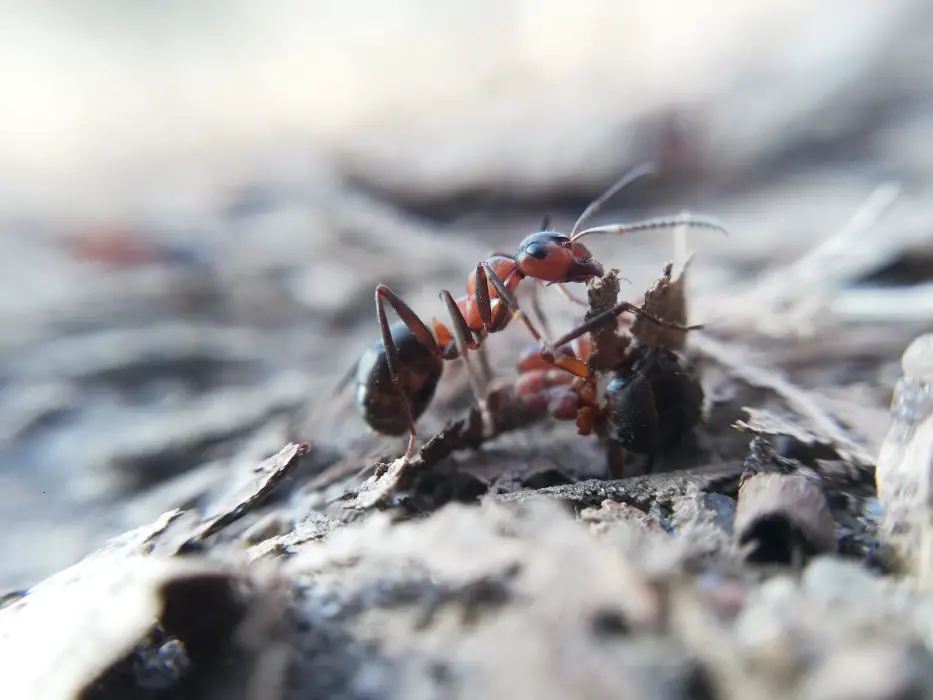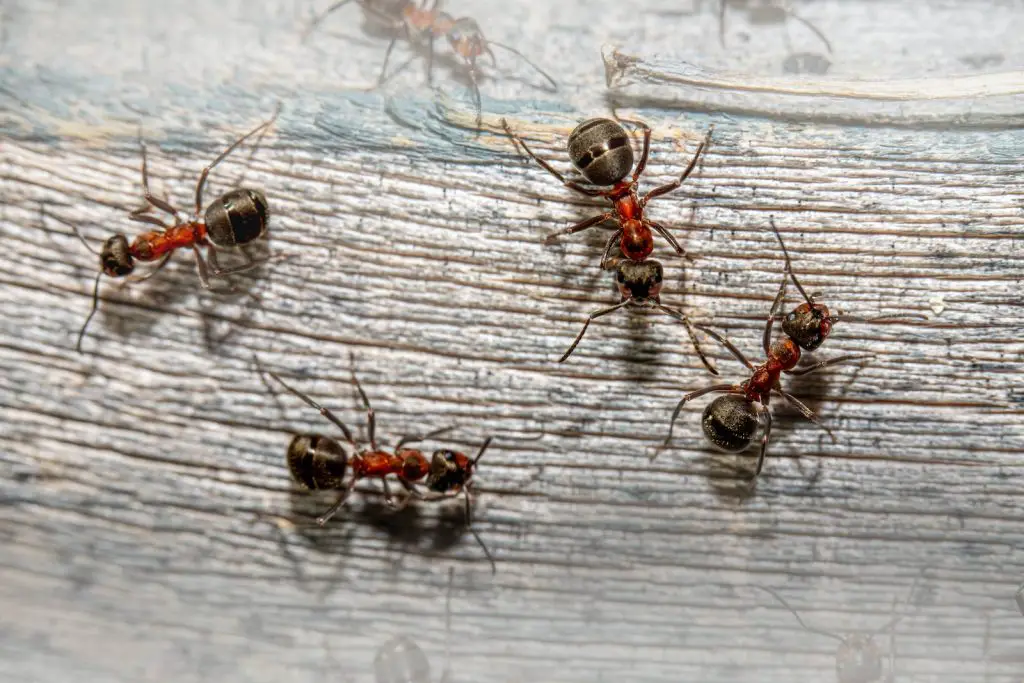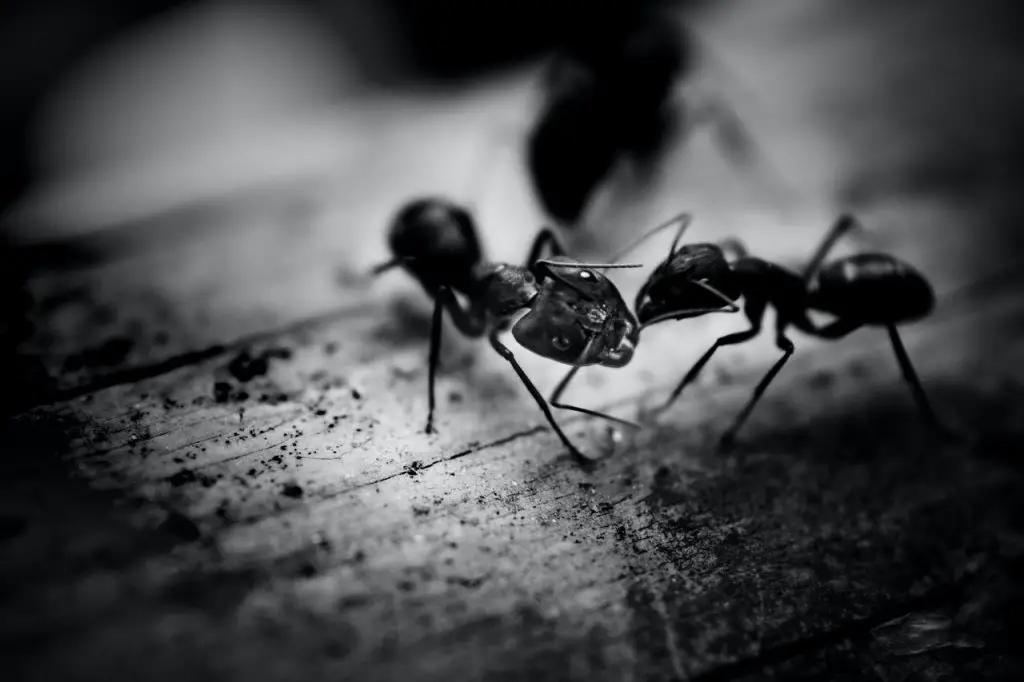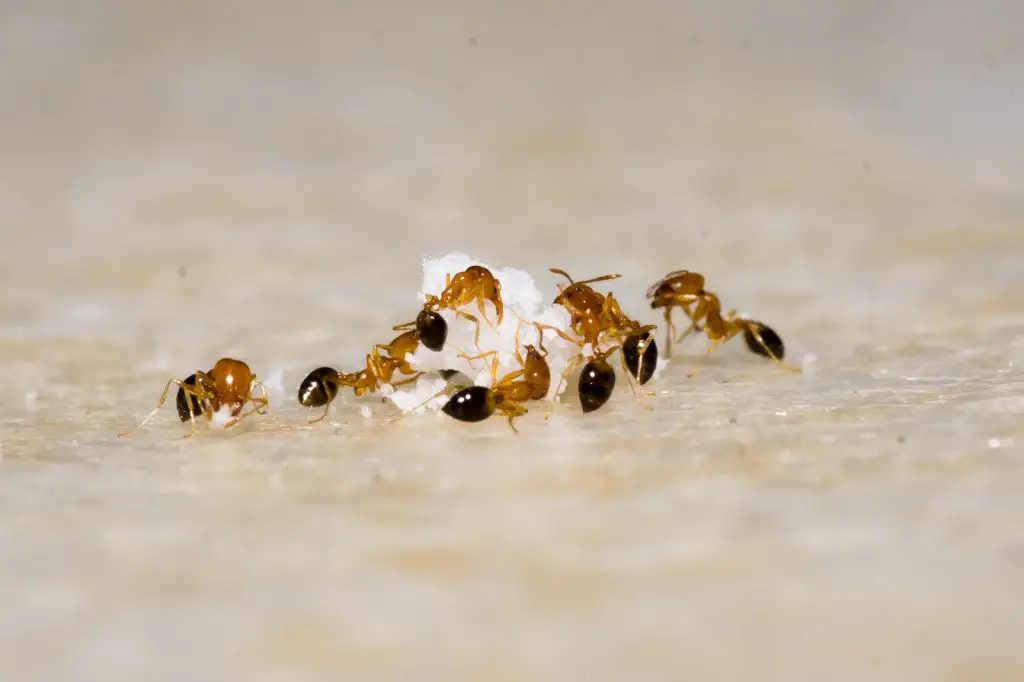As other insects ants are also a six legged insect with Head, thorax and abdomen.
But does their body contain blood?
They don’t have blood in them although they have a fluid which is called hemolymph.
Ants possess a fluid called hemolymph, similar to blood, but without red blood cells or haemoglobin.
Unlike blood, it doesn’t transport oxygen as ants absorb it through their spiracles
Do ants have blood ?
Ants possess a circulating fluid that flows throughout their bodies. This fluid, known as hemolymph, shares many similarities with human blood.
Hemolymph carries nutrients to the tissues in an ant’s body and also helps remove waste products from the cells.
Similar to other insects, ants possess an open circulatory system, where their internal fluid, hemolymph, doesn’t flow within arteries and veins.
Hemolymph serves as their equivalent of blood but lacks red blood cells, as it doesn’t need to transport oxygen.
Instead, ants receive oxygen directly through spiracles, small holes in their exoskeleton, which supply the required oxygen to their organs.
In contrast to humans, who rely on lungs and the pumping action of the heart to circulate oxygenated blood throughout the body, insects have a more direct oxygen supply mechanism.
Hemolymph plays a crucial role in insects as it transports essential components like minerals and hormones, similar to how blood functions in humans.
In ants, the hemolymph is circulated through a slender tube called the dorsal vessel, which serves as their heart.
This vessel pumps hemolymph from the ant’s abdomen up to the head, ensuring the distribution of vital fluids throughout their body.
What is the purpose of hemolymph?
Hemolymph in insects plays a crucial role in regulating chemical levels, eliminating waste, and maintaining temperature stability.
Due to their open circulatory system, ants can tolerate higher temperatures and pressure compared to humans.
It also contains the following:
- Water: Hemolymph, the fluid found in ants, contains water along with other components.
- Organic compounds: Hemolymph, the fluid found in ants, contains various organic compounds along with other components.
- Inorganic salts: Hemolymph, the fluid found in ants, contains inorganic salts among its composition.

Do ants have a circulatory system?
Ants possess a circulatory system similar to ours, but with a notable difference: theirs is open, unlike the closed circulatory system of vertebrates.
While vertebrates have blood flowing through small tubes, ants have hemolymph that directly contacts all body tissues and cells.
Since ants lack lungs, gas exchange occurs through small holes called spiracles on their bodies.
Unlike our circulatory system, the circulatory fluid in ants does not transport oxygen to body parts. Instead, oxygen enters through spiracles and passes through the trachea.
In an open circulatory system, the ends of the dorsal aorta remain open, allowing unrestricted movement of hemolymph into the hemocoel.
This system serves both blood and lymphatic functions found in the circulatory system of vertebrates.
Benefits and Drawbacks of an Open Circulatory System
Here are the benefits of having an open circulatory system:
Energy efficient: Having an open circulatory system requires less energy compared to a closed circulatory system as it does not necessitate the same level of energy expenditure for pumping and maintaining blood flow.
Adaptability: Organisms with open circulatory systems lack blood pressure, allowing them to adapt easily to changes in their environment and physiological state. This adaptability enables them to thrive in extreme conditions.
Drawbacks of an open circulatory system:
Limited control: The open circulatory system offers limited control over blood flow and pressure, which can restrict the efficient delivery of nutrients to tissues. Additionally, this system lacks the ability to direct blood to specific tissues in need.
Size-limited: The open circulatory system is not suitable for large animals as it lacks blood pressure to support a high metabolism. Moreover, the circulation is too slow to effectively cover a large body.
An Ants Heartbeat Rate
The heart of an ant pulsates at a rate of 30-200 beats per minute, which rises with activity and temperature.
Unlike humans, ants possess an open circulatory system, making them resilient to heart attacks and cardiac problems.
Furthermore, since the ant’s hemolymph does not carry oxygen like our bloodstream, the heart does not rely on the flow of hemolymph for oxygenation.
What color is ants’ blood?
Ants lack traditional blood, but they possess a blood-like fluid called hemolymph.
This watery and lightweight fluid does not contain haemoglobin or red blood cells.
Unlike vertebrates, the absence of red blood cells gives the hemolymph a yellowish or greenish appearance.
Hemolymph efficiently carries nutrients and minerals to body parts but does not transport oxygen. Instead, oxygen reaches the tissues through a dorsal vessel.

Do ants have blood vessels?
Ants lack blood vessels due to their open circulatory system.
Instead, they have a single aorta in the middle of their body that connects the rear body to the heart.
Unlike vertebrates, ants do not have blood vessels to separate oxygenated and deoxygenated blood.
Their circulatory fluid can directly reach all body parts in their open system.
Why do ants lack red blood cells?
In ants, the circulatory fluid or hemolymph does not contain red blood cells.
The absence of red blood cells is due to the lack of haemoglobin in the hemolymph.
Instead, ants have hemocyanin, a protein molecule with copper, which transports nutrients throughout their bodies.
Unlike haemoglobin, which binds oxygen, hemocyanin serves different functions.
When ants are crushed, the absence of red colour becomes apparent, and a whitish or yellowish fluid is released.
Conclusion
We explore the circulatory system of ants and compare it to that of humans and other insects.
Unlike humans, ants do not have traditional blood but instead possess a fluid called hemolymph, which lacks red blood cells and haemoglobin.
Hemolymph plays a vital role in transporting nutrients and minerals to the body parts of ants and helps eliminate waste products.
The open circulatory system of ants allows direct contact between hemolymph and body tissues, with oxygen being absorbed through spiracles rather than being transported by the circulatory fluid.
We also discuss the advantages and disadvantages of an open circulatory system, such as its energy efficiency and adaptability to different conditions.
However, the open circulatory system has limitations in terms of controlling blood flow and pressure and is not suitable for large animals due to its slow circulation.



